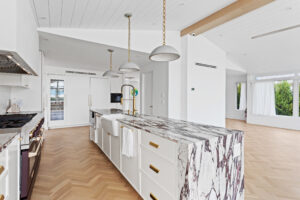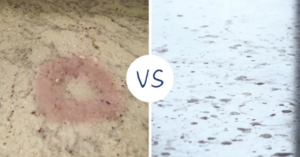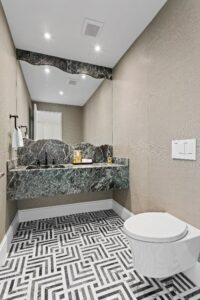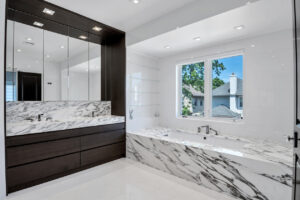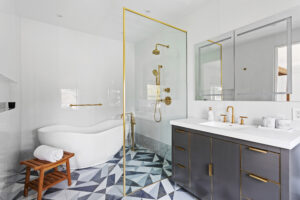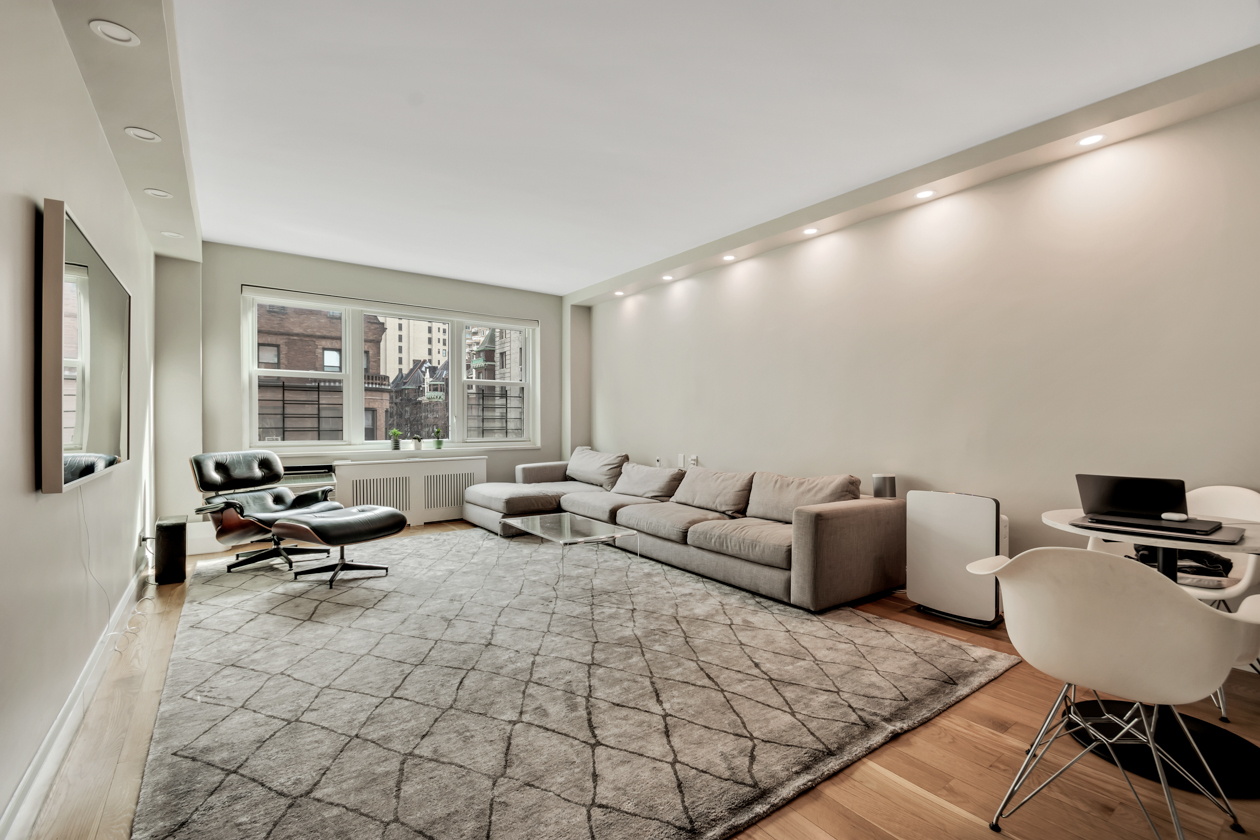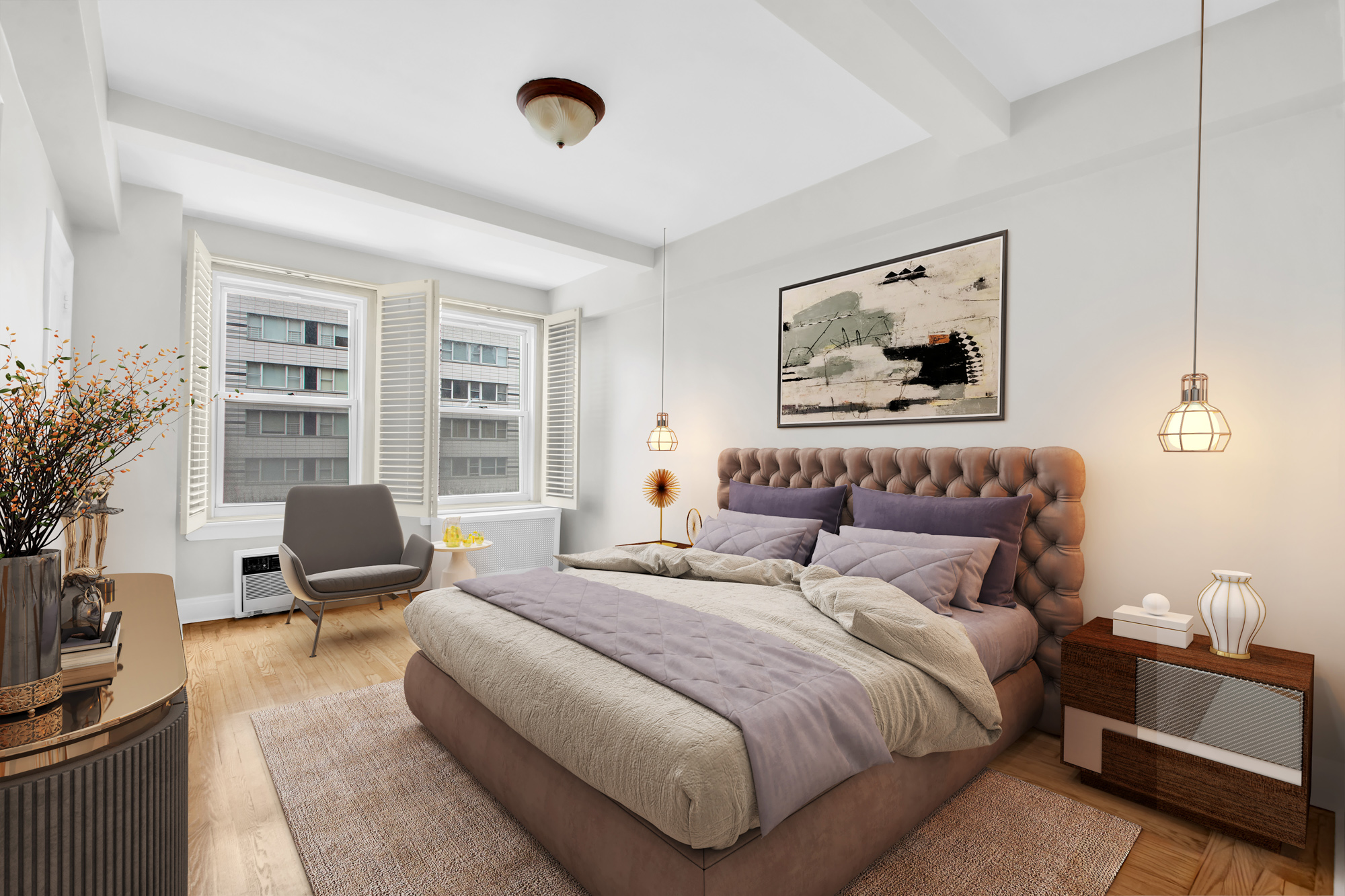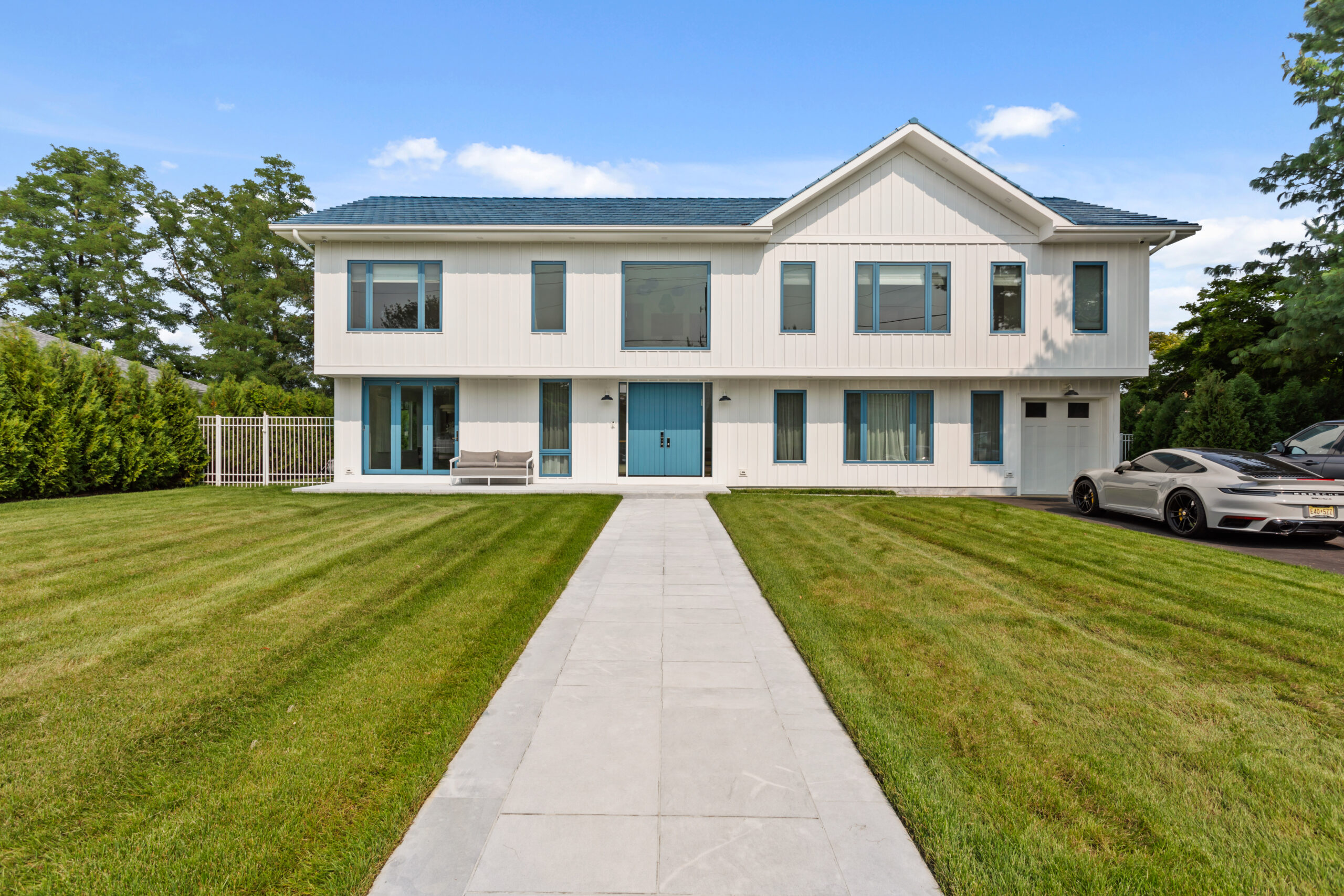Is Marble Right for Your NYC Apartment Renovation

Pros, Cons, and Designer Tips
Is Marble Right for Your NYC Apartment Renovation?
1.What Is Marble?
Marble has long been a symbol of luxury, elegance, and timeless design. From ancient sculptures to modern countertops, this natural stone continues to captivate homeowners and designers alike. But what exactly is marble, and why is it making such a strong return in today’s design trends?
According to Ultimate Academy and many other sources, marble is a metamorphic rock formed when limestone is subjected to high pressure and heat. This process gives it its distinctive veining and smooth texture, making it one of the most sought-after materials in both classic and contemporary interiors. Whether used in kitchens, bathrooms, or as accent pieces, marble brings a sense of sophistication and natural beauty that’s hard to replicate.
Why is Marble A Staple In Luxury Design?
One of the key reasons marble remains a staple in luxury design is its unique, high-end appearance. No two slabs are exactly alike, meaning each piece offers a one-of-a-kind aesthetic that elevates any space. Its natural veining, polished surface, and rich color variations create an immediate visual impact, signaling refinement and exclusivity.
In high-end interiors, materials matter. Marble’s association with prestige dates back centuries, from Roman architecture to Renaissance art. Today, designers and homeowners still rely on its timeless elegance to create interiors that feel curated and upscale. Whether used for flooring, feature walls, or statement furniture, marble communicates taste and affluence without needing to say a word.
The Marble Appeal in NYC Luxury Apartments
In a city where real estate is all about standing out, marble has become a defining feature in many New York City luxury apartments. From high-rise penthouses to boutique condo developments, marble surfaces—especially in kitchens and bathrooms—are considered a must-have for high-end buyers and renters alike.
From a waterfall island, bathroom tiles, or even subtle marble accents, marble adds immediate value and appeal. In NYC, where style and space are both at a premium, marble offers a way to maximize visual impact and convey luxury in a sleek, modern way.
2.The Pros of Using Marble
When it comes to selecting materials for high-end interiors, marble continues to be a top choice—not just for its beauty, but for the practical advantages it offers as well. Here’s a closer look at why marble remains such a valued material in luxury design:
- Aesthetic Appeal | Unique Veining, Timeless Elegance
Marble is prized for its naturally occurring patterns and veining, which ensure that no two surfaces are ever exactly the same. This individuality adds a layer of artistry to any interior. The stone’s smooth texture and soft luster create an instantly sophisticated look that never goes out of style. Whether used in slabs, tiles, or even decor accents, marble exudes elegance that making it timeless and being a visual centerpiece in any space. - Value Boost | Perceived Luxury Can Enhance Resale Value
In real estate—especially in competitive markets like New York City—perception matters. Marble is widely regarded as a luxury finish especially when compared to porcelain or quartz. Because of this, it’s presence in a home or apartment can increase buyer interest and perceived property value. Homes with marble features often stand out in listings and showings, helping them command higher resale prices and appeal to more discerning clientele.
- Design Flexibility | Works in Modern, Traditional, or Transitional Styles
Marble’s versatility makes it suitable for a wide range of design styles. It fits seamlessly into modern minimalist spaces with clean lines and neutral palettes, just as easily as it complements ornate, traditional interiors. For transitional spaces—those that blend classic and contemporary elements—marble serves as a unifying material that brings balance and sophistication. - Heat Resistance | Great for Kitchens and Vanities
Functionality is just as important as form, and marble delivers on both. Its natural resistance to heat (up to 350 degrees Fahrenheit) makes it a great option for kitchen countertops and bathroom vanities, where hot cookware or styling tools are frequently in use. While it can handle some heat “it is susceptible to thermal shock and may discolor or crack if exposed to excessive temperatures” so it’s still important to use trivets and heat pads to preserve the surface. Marble’s heat tolerance gives homeowners more peace of mind and everyday practicality.
3.The Cons of Using Marble
While marble is undeniably beautiful and prestigious, it’s important to understand that it comes with its own set of challenges. For homeowners and designers considering marble for their spaces—especially in high-traffic NYC apartments where form must meet function—it’s essential to weigh both the pros and the cons.
- Porous Nature: Vulnerable to Stains and Etching
Marble being a natural stone means it’s inherently porous. That beautiful surface can absorb liquids like wine, coffee, or lemon juice if not properly sealed. These substances can cause stains or etching—dull spots that occur when acidic materials interact with the marble. For NYC homeowners who love to entertain, a glass of red wine left on the counter for too long can easily leave a lasting mark. This vulnerability makes marble less ideal for messy cooks or families with young kids unless proactive care is taken.
- Maintenance Requirements: High Maintenance for a High-End Look
To keep marble looking its best, it requires regular maintenance. That includes sealing the surface at least once or twice a year and using non-abrasive cleaners for everyday care. Harsh chemicals or scrubbing pads can damage the finish and accelerate wear. For busy professionals or city dwellers used to low-maintenance finishes, this level of upkeep can be a dealbreaker. If you want the beauty of marble without the hassle, alternatives like quartz or granite with marble-like finishes may be worth exploring.
- Cost: Premium Material with a Premium Price Tag
There’s no getting around it—marble is expensive. Both the material and the installation come with a steep price tag. The stone itself ranges significantly depending on the type, its weight and fragility demand skilled labor to install. In a city like New York, where renovation costs are already high, opting for marble can dramatically increase your project budget. While it’s often worth it for the added resale value and visual appeal, it’s not always the most practical choice for every homeowner or investor. This is where Granite or Quartz start to become an option for kitchen and bath renovation projects.
- Wear Over Time: Natural Aging Isn’t for Everyone
Unlike some materials that remain pristine over decades, marble develops character over time. It can chip around the edges, develop small cracks, or form a patina—a soft sheen and color change that comes with age and use. Some people love this lived-in, organic look. Others see it as damage. If you’re looking for a forever-polished, flawless surface, marble might not be the right fit. In NYC apartments, where every detail counts and wear is inevitable, understanding and embracing this natural aging process is key.
4.Special Considerations for NYC Apartments
Installing marble in a New York City apartment is never as simple as choosing a slab and setting it in place. The unique architectural, logistical, and regulatory challenges of the city require extra planning and professional insight. Here are some key factors to consider before incorporating marble into a NYC space.
Building Restrictions: Weight, Thickness & Elevator Access
Marble is heavy—really heavy. In NYC, where most residential buildings are multi-story walk-ups or have small passenger elevators, the weight and size of the slabs can quickly become a logistical headache. Many co-op and condo buildings have strict rules on material limits, including:
- Maximum slab size to fit into freight or passenger elevators
- Weight limits to prevent overloading floors or structural components
- Seam placement requirements when large pieces need to be cut for transport
In NYC co-ops, installing marble countertops isn’t as simple as choosing a slab—it typically requires board approval and compliance with strict building guidelines outlined in an Alteration Agreement. This includes submitting detailed plans, contractor insurance, licenses, and references. These requirements, combined with logistical constraints like limited elevator access and weight restrictions, make achieving a seamless marble design especially challenging. To work within these limitations, designers often get creative—strategically placing seams to align with cabinetry or architectural elements or opting for thinner marble veneers that replicate the look of full slabs without the added bulk.
Moisture and Plumbing Concerns in Prewar Buildings
Many of New York’s most charming apartments—especially those in prewar buildings—come with hidden quirks, particularly behind the walls. Outdated plumbing systems and limited waterproofing can pose serious risks for materials like marble, especially in bathrooms and kitchens where moisture is constant.
Marble’s porous nature makes it more susceptible to water damage, mildew, and even structural deterioration if installed over improperly sealed or aging surfaces. Older plumbing may not support modern fixtures or may be prone to leaks, so before installation, it’s essential to:
- Conduct a moisture and plumbing inspection, especially in wet areas
- Update subfloors, waterproofing membranes, and vapor barriers as needed
- Choose marble with an appropriate finish (honed vs. polished) to reduce slipping in wet spaces
Working with experienced contractors and interior designers who understand both marble and the intricacies of NYC building codes is critical to avoiding costly mistakes and ensuring long-term durability.
6.Expert Tips from a NYC Design-Build Firm
When working with marble in the fast-paced world of New York City interiors, strategic planning is everything. Our design-build team has seen firsthand how this luxurious material can elevate a space—if it’s used wisely. From knowing where marble performs best to blending it with practical alternatives, here are our expert tips for using marble effectively in NYC homes.
Choose the Right Spaces: Where Marble Works Best
Not every surface needs to be wrapped in marble to make an impact. In fact, marble shines the most in spaces where it’s less exposed to heavy use and moisture. We often recommend it for:
- Powder rooms, where guests can appreciate its elegance without the wear and tear of daily routines
- Fireplace surrounds, where marble becomes a stunning focal point with minimal risk of damage
- Entryways or feature walls, where it adds instant drama without being overly exposed
By being selective, you preserve both the beauty and longevity of the material.
Opt for the Right Finish: Honed vs. Polished
The finish of your marble matters just as much as where you place it. While polished marble has a mirror-like sheen that screams luxury, it also highlights scratches and etches more easily. Honed marble, with its matte finish, is far more forgiving in high-traffic areas. It minimizes glare, hides imperfections, and gives a more contemporary, understated look—perfect for modern NYC aesthetics.
Mix and Match: Natural Marble + Porcelain Lookalikes
One of the smartest ways to balance cost, performance, and aesthetics is by mixing real marble with high-quality porcelain or quartz lookalikes. Use authentic marble for focal points like countertops or backsplashes, and opt for porcelain alternatives in flooring or high-traffic zones. Many porcelain tiles today are nearly indistinguishable from the real thing, making them a practical, budget-friendly companion that reduces maintenance demands without compromising on style.
Don’t Skip Protective Measures
Marble is an investment—and like any investment, it needs protection. Here are a few non-negotiables we recommend for NYC homeowners:
- Sealants: Apply a high-quality, penetrating sealer at installation and reapply annually to guard against stains and moisture.
- Rugs and mats: In entryways or marble-floored rooms, use area rugs to prevent scratching from shoes or furniture.
- Soft cleaning tools: Always clean with pH-neutral products and soft cloths to avoid surface damage over time.
Final Thoughts: Is Marble Right for You?
Marble is undoubtedly one of the most timeless and luxurious materials available—but it’s not for everyone. Before committing, it’s important to step back and evaluate whether it truly fits your lifestyle, your space, and your expectations. Here are five key questions to ask yourself to determine if marble is the right choice—or if a durable alternative might serve you better.
- How much wear and tear will this surface experience?
Marble performs best in lower-traffic or decorative areas. If you’re planning to use it in a busy kitchen or a bathroom shared by multiple people, be prepared for regular upkeep—or consider mixing in more durable alternatives. - Are you comfortable with maintenance and occasional imperfections?
Marble isn’t a “set it and forget it” material. It needs sealing, gentle cleaning, and a bit of grace when it develops a patina or small chips. If you prefer a low-maintenance lifestyle or flawless surfaces, honed quartz or porcelain may be a better fit. - Does your building support marble installations?
If you’re in a co-op or older NYC building, make sure your renovation plans align with weight limits, elevator sizes, and alteration agreements. Logistics and board approval can significantly impact whether marble is feasible. - What’s your budget for both materials and installation?
Marble itself is expensive—and so is installing it correctly. Factor in additional costs for transportation, labor, and ongoing care. If you’re working within a tight budget, using marble as an accent rather than a full-surface solution can still deliver impact without overspending. - Are you drawn to marble for its beauty and its natural character?
If you love the idea of a surface that evolves with time and tells a story through subtle wear, marble will reward you with beauty and depth. But if you’re chasing perfection and uniformity, it may not be the right match.
Marble is a stunning material that adds sophistication to any space—but like any design decision, it’s about the right fit. If you value elegance, uniqueness, and are ready for the maintenance it demands, marble can elevate your home like few materials can. If not, today’s alternatives offer excellent style with fewer strings attached.
Thinking about adding marble to your next renovation? Our team can help you design and build with both style and practicality in mind.
Call Us Today!
If you’re planning a gut renovation and want to make the most of every square foot, get in touch with our team. Let’s build something better—together.
Contact us today to start planning your dream renovation! (718) 521-2879

